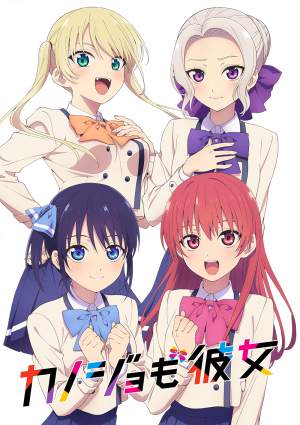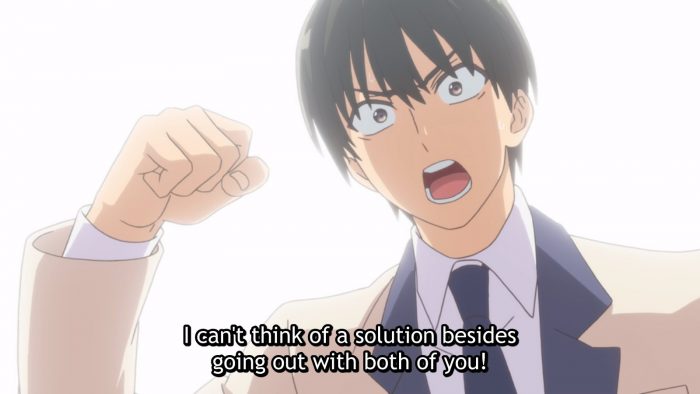
Kanojo mo Kanojo (Girlfriend, Girlfriend) has been a fun part of the summer anime roster because of its ridiculous and wacky comedy, and underrepresented idea of romance. However, while the show can be really funny, we have to ask ourselves if there are aspects of this show that we can pick apart for more than just their comedic value. One thing that’s really come up a lot in this show, particularly with the protagonist Naoya, is shame. Like many other slice of life comedies, the main gag is quite often a wacky reimagination of a really mundane concept or relatable aspect of life. When the idea is to create a romantic comedy, similar ideas are repackaged with a different “catch”.
Some shows play with how characters meet and develop romance, while some just throw two teenagers into some kind of living situation and see where it goes, others play around with the relationship itself, and Girlfriend, Girlfriend’s curveball in this regard is the fact that the main character has not one, but two girlfriends! (You may now “ooh” and “aah”). However, is it possible that the way this anime explores its central concept is lacking somehow? Could it even be harmful? Let’s find out!
Are You Not Like, Ashamed? Are You Not Like, Ashamed?!
Naoya loves Saki, and after years and years and years of being rejected or rebuffed, she finally returns his feelings. Sure, why not. However, when Nagisa comes into the mix confessing her love for him, Naoya is very honest about how stirred he is by it all, and tries to do something most protagonists wouldn’t—acknowledge and admit it, and tell the truth immediately. Naoya is extremely earnest and it's this characterization that’s supposed to make us like him and root for him; however, it’s contrasted with his “brazen” capacity to not only desire someone outside of his monogamous relationship, but be open about it too. We’re supposed to see that aspect of his character as him being honest “to a fault”, and this becomes a consistent point of humour for Girlfriend, Girlfriend.
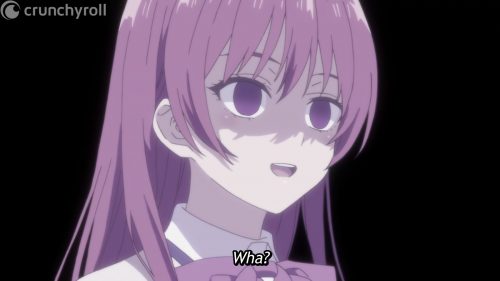
Naoya’s earnestness is supposed to be his gift and his curse—it’s what draws his girlfriends to him in the first place, but now that they’re in a non-monogamous relationship, they fear being judged in the court of public opinion. Here’s where that “to a fault” comes in with Naoya’s honesty—they’re trying to keep it a secret to save face because it would be a great shame upon all of them, but Naoya’s loud and enthusiastic personality often let slip some of the most crucial aspects of whatever specific situation they’re trying to cover up!
Shame is an undeniable theme in this show, as it is shame that prevents Saki, Nagisa and Naoya from living their truth publicly. They’re so self-conscious about being in this taboo, unconventional and maybe even corrupted relationship format that they can’t even enjoy lunch together at school without trying to do that in a ridiculous place like a gym storage somewhere. The way they’re so embarrassed about it tells us that their relationship is fundamentally something to be ashamed about.
For Saki, it’s the shame of not having had the kind of emotional hold over her boyfriend that would make him averse to finding anybody else attractive; the shame of having been the settler who is now the reacher; the shame of not being enough for Naoya. For Naoya, the shame is in having been swayed by someone outside of his relationship and even worse, having been “selfish” enough to want to pursue that with Saki’s knowledge and blessing. He wears this shame like a badge of… well, shame, consistently admonishing himself for having found Nagisa so attractive that he just had to date her. To make up for this, he tries his best to make sure they’re both happy with him, which has been the catalyst of many wholesome moments, but also a lot of pretty wacky ones too. We know from the beginning that all three of them have their hearts in the right place, and that they’re trying to share in this happiness.
A really funny part was when the show introduced its third heroine, the blonde-haired tsundere “MeTuber” known as Milika. This is because the show hinged on the outrage of Naoya dating two girls at the same time; however, it steamed ahead and created conflict in a way we expected—a third party who’ll fall in love with Naoya and attempt to take him away from his girlfriends.
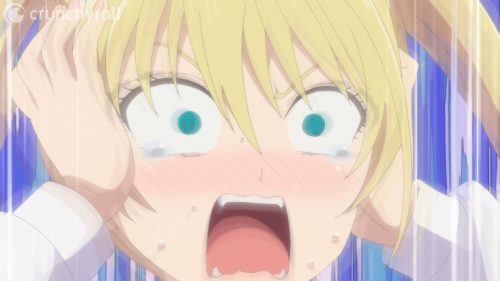
The ashamed Naoya has internalized his “infidelity” and is worried that he could be swayed by anyone if he spent enough time with them. Nagisa and Saki try their hardest to prevent this, but it only makes Milika even more adamant, and Naoya’s multiple rejections of her advances spur her on even more. Naoya worries that if he falls in love with Milika too, it would make him even more irredeemable because he’d be a “three-timer”. This is how Naoya’s shame presents itself in the show, and it’s part of the reason why he so earnestly wants to treat his girlfriends with the utmost care.
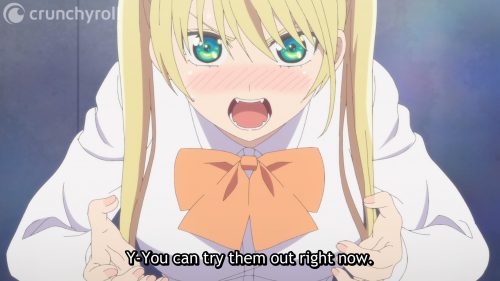
Have a Little Tenderness
Saki, Nagisa and Naoya all have their own issues when it comes to navigating the understandably different landscape that is their relationship, especially because they’re all teenagers with absolutely no relationship or sexual experience whatsoever. The thing is, the show has moments of tenderness where it focuses on the nuances of this kind of relationship outside of the regular scope through which most anime would do it.
Yes, this is a harem; however, the establishment of Saki and Nagisa as Naoya’s girlfriends sets a different kind of precedent and makes this a unique romance anime from that standpoint. Many shows would have all the resident heroines duke it out (metaphorically) for the grand prize which is the affections of the main character, but it doesn’t quite work like that here. Saki herself falls “in love” with Nagisa on first meeting like Naoya did, and it’s Nagisa’s genuineness that won her over and led Saki to accept the new relationship configuration, despite being reluctant to do so.

Missing Pieces
The thing about this is that Saki seems to mean it in a platonic sense sometimes, and other times, she seems to be very attracted to Nagisa, but the series doesn’t flesh out these aspects of the overall relationship. As far as we know, the structure is that Naoya is dating both of them and living together with them, so their lives overlap quite profoundly, yet, it’s not so much explored as to whether or not Saki reacts to her feelings of genuine attraction to Nagisa despite the sheer proximity.

However, that being said, it’s also perfectly alright for them to just be friends despite Saki’s sometimes lecherous glances at Nagisa because attraction needn’t equal compatibility, desire, or a responsibility to date, but what we’re getting at is that there isn’t much room for the story to explore the intricacies of this relationship in serious depth most of the time, probably because of how it treats the central component—non-monogamous relationships—with a kind of humor-laced disdain, a profound disbelief in the possibility of such a relationship actually working out and a general sense of judgment towards unconventional relationships as a concept.
Final Thoughts
Somehow, it’s been both progressive in terms of creating variations in the romance genre that we don’t see much of, and representing concepts that aren’t so thoroughly explored in the genre; but also judgmental in its exploration, and perhaps afraid to go beyond using its central concept rather conservatively as a just gimmick. The element of shame as such a pervasive and coercive force in Girlfriend, Girlfriend, not to mention that it seems to draw from this wellspring of shame to give us some of its admittedly hilarious comedy. The shame is quite harmful because it illustrates a general disdain for the relationship we’re meant to be rooting for (as well as further steepening the stigma around non-monogamous relationships). There’s plenty to talk about with this show, so we’d love to hear your thoughts! Drop a comment below and let us know what your think!
Recommended Post



